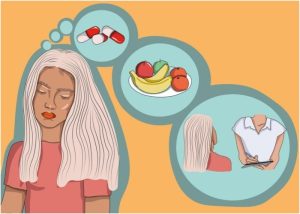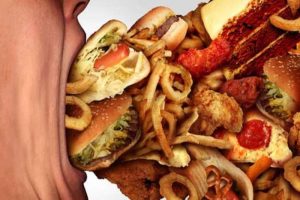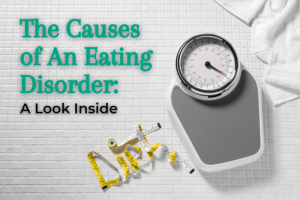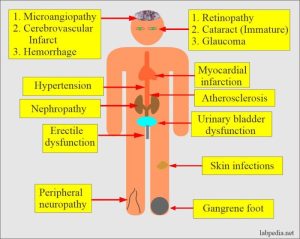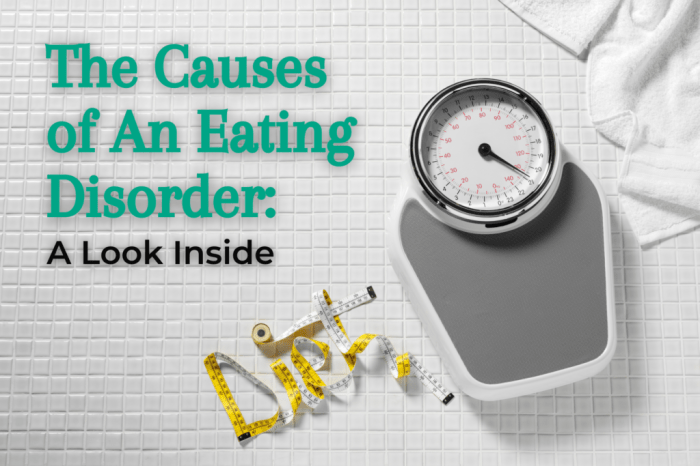
Step into the complex world of eating disorders as we unravel the various factors that contribute to this prevalent issue. Get ready for an insightful journey filled with intriguing insights and eye-opening revelations.
In the following paragraphs, we will delve deep into the psychological, biological, environmental, co-occurring conditions, and sociocultural influences that play a role in the development of eating disorders.
Psychological Causes

Societal pressures, low self-esteem, and negative body image play significant roles in the development of eating disorders.
Societal Pressures
- Social media, magazines, and entertainment industries often promote unrealistic beauty standards.
- Constant exposure to these ideals can lead individuals to compare themselves unfavorably, contributing to feelings of inadequacy.
- Pressure to conform to these standards can trigger disordered eating behaviors as a means to attain the desired body image.
Low Self-Esteem
- Individuals with low self-esteem may seek validation and acceptance through their appearance.
- This can manifest in extreme dieting or restriction of food as a way to gain a sense of control and boost self-worth.
- Low self-esteem can also make individuals more susceptible to negative influences and harmful behaviors related to food and body image.
Negative Body Image
- A distorted perception of one’s body can lead to dissatisfaction and self-criticism.
- This dissatisfaction may drive individuals to engage in unhealthy eating habits in an attempt to change their physical appearance.
- Constant focus on perceived flaws can exacerbate feelings of worthlessness and fuel the development of eating disorders.
Biological Factors

Eating disorders can also be influenced by biological factors, including genetics, neurotransmitters, and hormonal imbalances.
Genetics and Eating Disorders
Genetics play a significant role in determining an individual’s susceptibility to eating disorders. Studies have shown that individuals with a family history of eating disorders are more likely to develop one themselves. This suggests that genetic factors can contribute to the risk of developing an eating disorder.
Role of Neurotransmitters
Neurotransmitters, such as serotonin, play a crucial role in regulating eating behaviors. Serotonin is a neurotransmitter that helps control mood and appetite. Imbalances in serotonin levels can lead to changes in eating patterns, potentially contributing to the development of eating disorders.
Hormonal Imbalances
Hormonal imbalances can also impact the development of eating disorders. For example, disruptions in hormones like leptin, which regulates hunger and energy balance, can influence appetite control and food intake. These hormonal imbalances can contribute to disordered eating behaviors and the onset of eating disorders.
Environmental Triggers
Eating disorders can be influenced by various environmental factors that shape an individual’s perception of food, body image, and overall relationship with eating habits.
Diet Culture and Media Portrayal
The pervasive diet culture and media portrayal of ideal body types can have a significant impact on individuals, especially young people. Constant exposure to unrealistic beauty standards and messages promoting extreme weight loss can lead to negative body image issues and unhealthy eating behaviors. This can create a toxic environment where individuals feel pressured to conform to these unrealistic ideals, ultimately contributing to the development of eating disorders.
Family Dynamics and Upbringing
Family dynamics and upbringing play a crucial role in shaping an individual’s relationship with food. For example, growing up in a household where food is used as a means of control, reward, or punishment can lead to disordered eating patterns. Additionally, constant criticism or focus on weight and appearance within the family can contribute to low self-esteem and body dissatisfaction, further fueling the risk of developing an eating disorder.
Traumatic Events and Abuse
Traumatic events or experiences of abuse can also trigger disordered eating patterns as a coping mechanism. Individuals who have experienced trauma may turn to food restriction, binge eating, or purging as a way to cope with overwhelming emotions or regain a sense of control. These maladaptive coping strategies can develop into full-blown eating disorders if not addressed and treated effectively.
Co-occurring Conditions
Eating disorders often co-occur with mental health conditions, such as anxiety and depression. These mental health issues can exacerbate eating disorder symptoms and make recovery more challenging. Understanding the relationship between these conditions is crucial in providing effective treatment and support.
Anxiety and Depression
Anxiety and depression are common co-occurring conditions with eating disorders. Individuals with eating disorders may experience high levels of anxiety related to food, body image, or social situations. Depression can also contribute to feelings of low self-worth and hopelessness, which can fuel disordered eating behaviors.
- Anxiety and depression can increase the risk of developing an eating disorder.
- Addressing underlying mental health issues is essential in treating eating disorders effectively.
- Therapy and medication can help manage symptoms of anxiety and depression in conjunction with eating disorder treatment.
Substance Abuse
Substance abuse can exacerbate eating disorder symptoms and complicate recovery efforts. Individuals with eating disorders may turn to drugs or alcohol as a way to cope with their emotions or to suppress their appetite. This harmful cycle can further damage physical and mental health.
- Substance abuse can mask the underlying issues contributing to the eating disorder.
- Integrated treatment programs addressing both substance abuse and eating disorders are crucial for recovery.
- Support groups and therapy can help individuals address the root causes of their behaviors and develop healthier coping mechanisms.
Obsessive-Compulsive Disorder (OCD)
There is a strong connection between eating disorders and obsessive-compulsive disorder (OCD). Individuals with OCD may exhibit obsessive thoughts and compulsive behaviors related to food, weight, or body image, which can overlap with symptoms of eating disorders.
- OCD behaviors can intensify disordered eating patterns and rituals.
- Combining OCD treatment strategies with eating disorder therapy can help individuals manage symptoms effectively.
- Cognitive-behavioral therapy (CBT) and exposure therapy are commonly used to address OCD and eating disorder symptoms simultaneously.
Sociocultural Influences
Cultural norms, peer pressure, social media, and socioeconomic factors all play a significant role in influencing individuals’ attitudes towards eating and body image.
Cultural Norms and Eating Disorders
Cultural norms around food and body image can contribute to the development of eating disorders. For example, in Western societies, there is often an idealization of thinness, which can lead individuals to engage in disordered eating behaviors to meet this standard. On the other hand, in some cultures, larger body sizes may be associated with wealth or fertility, leading to a different set of pressures and expectations.
These conflicting messages can create confusion and distress for individuals trying to navigate their relationship with food and their bodies.
Peer Pressure and Social Media Influence
Peer pressure and social media play a significant role in shaping individuals’ attitudes towards eating and weight. In today’s digital age, social media platforms are filled with images of unrealistic beauty standards and curated lifestyles, which can lead to comparisons and feelings of inadequacy. Peer pressure, both online and in-person, can further exacerbate these feelings, pushing individuals to conform to certain behaviors or body ideals to fit in or gain approval.
This constant pressure to look a certain way can contribute to the development of eating disorders as individuals strive to meet unattainable standards.
Socioeconomic Factors and Treatment Access
Socioeconomic factors can impact access to treatment and support for individuals with eating disorders. Treatment for eating disorders can be costly, and individuals from lower socioeconomic backgrounds may struggle to afford therapy, medical care, or specialized treatment programs. Limited access to resources and support can make it challenging for individuals to receive the help they need, prolonging their suffering and potentially worsening their condition.
Addressing these disparities in access to care is crucial in ensuring that individuals from all backgrounds have the opportunity to recover and heal from eating disorders.
Ending Remarks
As we wrap up our discussion on the causes of eating disorders, it becomes evident that a multitude of factors interplay to bring about these conditions. From societal pressures to biological predispositions, each element contributes to the complex tapestry of disordered eating behaviors. By understanding these causes, we can strive towards a more informed and supportive approach to addressing eating disorders in our society.
Question & Answer Hub
How do societal pressures contribute to eating disorders?
Societal pressures, such as unrealistic body standards, can lead individuals to develop unhealthy relationships with food and their bodies, fueling the onset of eating disorders.
Can genetics influence susceptibility to eating disorders?
Yes, genetics can play a role in increasing the likelihood of developing an eating disorder, as certain genetic factors may predispose individuals to such conditions.
What is the impact of family dynamics on disordered eating patterns?
Family dynamics, including relationships with parents and siblings, can significantly influence an individual’s attitudes towards food and contribute to the development of eating disorders.
How do cultural norms affect the prevalence of eating disorders?
Cultural norms that promote thinness or certain body ideals can create a toxic environment that fosters disordered eating behaviors among individuals striving to conform to these standards.
